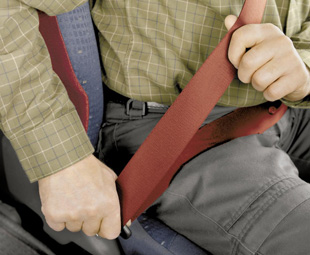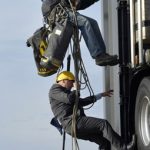There’s a reason it’s called a safety belt

Road accidents and fatalities are a major cause of concern within the South African transport industry, but our country isn’t the only one plagued by this blight.
Carl Johan Almqvist, traffic and product safety director at Volvo Trucks, in Sweden, explains: “If more road users wore their safety belts, more than 7 000 lives would be saved every year in the European Union alone. Professional drivers should serve as an example.”
According to the World Health Organisation’s report, “Global Status Report on Road Safety 2013”, the chances of surviving a serious road accident are doubled if the driver or passenger uses a safety belt. It’s no wonder that the report emphasises increased belt usage as one of the most crucial issues for improving traffic safety.
However, things are picking up as Almqvist points out: “In recent years belt usage increased among truck drivers, but even so, fewer than half are using the safety belt. And that’s despite the fact that both our own and other European research has revealed that at least 50 percent of truck drivers, who lost their lives in traffic accidents, would have survived if they had been belted in.” He adds that, of all the drivers involved in fatal accidents, only five percent were wearing their safety belts.
The startling picture is emphasised in a survey conducted by Sweden’s National Society for Road Safety, based on the observation of more than 700 truck drivers and interviews with more than 200 drivers, between 2011 and 2013. Most said they used safety belts when driving a car, but only half did so behind the wheel of their truck. Among the reasons given were that it is difficult, inconvenient or time-consuming to put on and take off the belt.
“Bearing in mind that the safety belt can spell the difference between life and death, these are not particularly credible excuses,” emphasises Almqvist. “At Volvo Trucks we invest considerable resources in the development of accident-prevention systems but, as long as the human factor plays such a big role, it will never be possible to entirely eliminate the risk of road accidents.”
He adds: “I therefore encourage both haulage firms and drivers to do what they can to improve safety. The simplest measure of all is to use the single most important safety feature on board – the safety belt.”
Published by
Focus on Transport
focusmagsa




